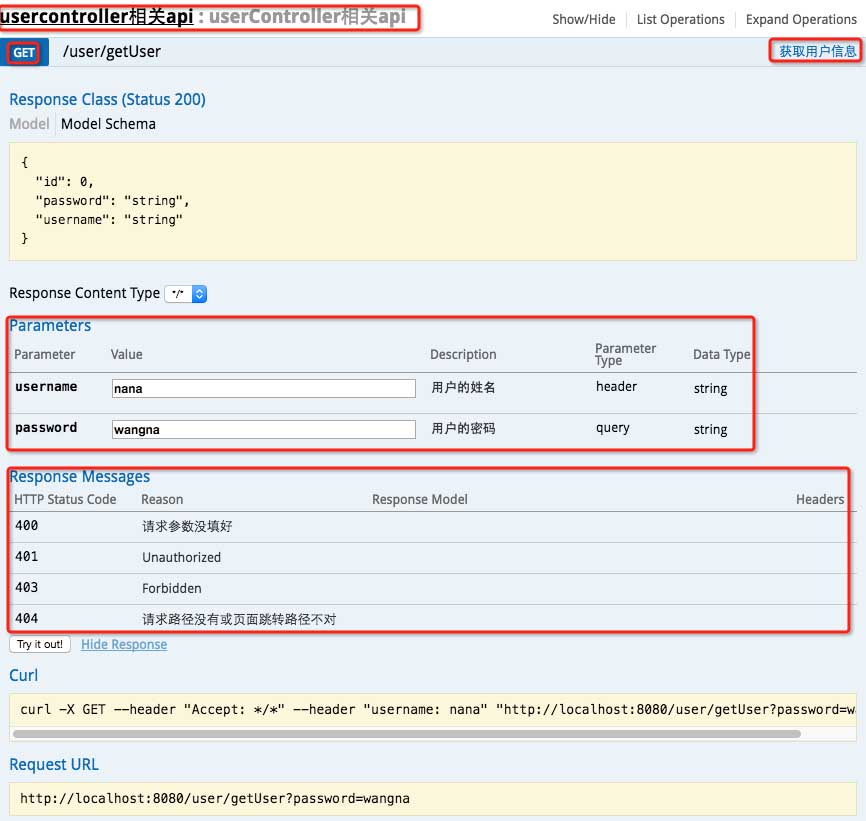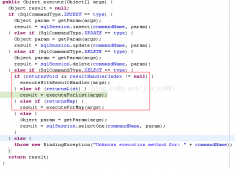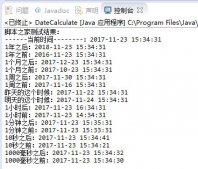@ApiImplicitParam
作用在方法上,表示單獨(dú)的請(qǐng)求參數(shù)
參數(shù)
-
name:參數(shù)名。 -
value:參數(shù)的具體意義,作用。 -
required:參數(shù)是否必填。 -
dataType:參數(shù)的數(shù)據(jù)類(lèi)型。 -
paramType:查詢(xún)參數(shù)類(lèi)型,這里有幾種形式:
類(lèi)型 作用
-
path以地址的形式提交數(shù)據(jù) -
query直接跟參數(shù)完成自動(dòng)映射賦值 -
body以流的形式提交 僅支持POST -
header參數(shù)在request headers 里邊提交 -
form以form表單的形式提交 僅支持POST
在這里我被坑過(guò)一次:當(dāng)我發(fā)POST請(qǐng)求的時(shí)候,當(dāng)時(shí)接受的整個(gè)參數(shù),不論我用body還是query,后臺(tái)都會(huì)報(bào)Body Missing錯(cuò)誤。
這個(gè)參數(shù)和SpringMvc中的@RequestBody沖突,索性我就去掉了paramType,對(duì)接口測(cè)試并沒(méi)有影響。
@ApiImplicitParams
用于方法,包含多個(gè) @ApiImplicitParam:
例:
|
1
2
3
4
5
6
7
8
|
@ApiOperation("查詢(xún)測(cè)試")@GetMapping("select")//@ApiImplicitParam(name="name",value="用戶(hù)名",dataType="String", paramType = "query")@ApiImplicitParams({@ApiImplicitParam(name="name",value="用戶(hù)名",dataType="string", paramType = "query",example="xingguo"),@ApiImplicitParam(name="id",value="用戶(hù)id",dataType="long", paramType = "query")})public void select(){} |
paramType 示例詳解
path
|
1
2
|
@RequestMapping(value = "/findById1/{id}", method = RequestMethod.GET, produces = MediaType.APPLICATION_JSON_UTF8_VALUE)@PathVariable(name = "id") Long id |
body
|
1
2
3
|
@ApiImplicitParams({ @ApiImplicitParam(paramType = "body", dataType = "MessageParam", name = "param", value = "信息參數(shù)", required = true) })@RequestMapping(value = "/findById3", method = RequestMethod.POST, produces = MediaType.APPLICATION_JSON_UTF8_VALUE, consumes = MediaType.APPLICATION_JSON_VALUE)@RequestBody MessageParam param |
提交的參數(shù)是這個(gè)對(duì)象的一個(gè)json,然后會(huì)自動(dòng)解析到對(duì)應(yīng)的字段上去,也可以通過(guò)流的形式接收當(dāng)前的請(qǐng)求數(shù)據(jù),但是這個(gè)和上面的接收方式僅能使用一個(gè)(用@RequestBody之后流就會(huì)關(guān)閉了)
header
|
1
2
3
4
5
|
@ApiImplicitParams({ @ApiImplicitParam(paramType = "header", dataType = "Long", name = "id", value = "信息id", required = true) })String idstr = request.getHeader("id");if (StringUtils.isNumeric(idstr)) {id = Long.parseLong(idstr);} |
Form
|
1
2
|
@ApiImplicitParams({ @ApiImplicitParam(paramType = "form", dataType = "Long", name = "id", value = "信息id", required = true) })@RequestMapping(value = "/findById5", method = RequestMethod.POST, produces = MediaType.APPLICATION_JSON_UTF8_VALUE, consumes = MediaType.APPLICATION_FORM_URLENCODED_VALUE) |
小結(jié)一下
(1)對(duì)于@ApiImplicitParam的paramType:query、form域中的值需要使用@RequestParam獲取, header域中的值需要使用@RequestHeader來(lái)獲取,path域中的值需要使用@PathVariable來(lái)獲取,body域中的值使用@RequestBody來(lái)獲取,否則可能出錯(cuò);而且如果paramType是body,name就不能是body,否則有問(wèn)題,與官方文檔中的“If paramType is "body", the name should be "body"不符。
-
@ApiImplicitParams:用在方法上包含一組參數(shù)說(shuō)明 -
@ApiImplicitParam:用在@ApiImplicitParams注解中,指定一個(gè)請(qǐng)求參數(shù)的各個(gè)方面 -
paramType:參數(shù)放在哪個(gè)地方 -
header-->請(qǐng)求參數(shù)的獲取:@RequestHeader -
query-->請(qǐng)求參數(shù)的獲取:@RequestParam -
path(用于restful接口)-->請(qǐng)求參數(shù)的獲取:@PathVariable -
body(不常用) -
form(不常用) -
name:參數(shù)名 -
dataType:參數(shù)類(lèi)型 -
required:參數(shù)是否必須傳 -
value:參數(shù)的意思 -
defaultValue:參數(shù)的默認(rèn)值 -
@ApiResponses:用于表示一組響應(yīng) -
@ApiResponse:用在@ApiResponses中,一般用于表達(dá)一個(gè)錯(cuò)誤的響應(yīng)信息 -
code:數(shù)字,例如400 -
message:信息,例如"請(qǐng)求參數(shù)沒(méi)填好" -
response:拋出異常的類(lèi) - 以上這些就是最常用的幾個(gè)注解了。
|
1
2
3
4
5
6
7
8
9
10
11
12
13
14
15
16
17
18
19
20
21
22
23
24
25
26
27
28
29
30
31
32
|
import org.springframework.beans.factory.annotation.Autowired;import org.springframework.web.bind.annotation.RequestHeader;import org.springframework.web.bind.annotation.RequestMapping;import org.springframework.web.bind.annotation.RequestMethod;import org.springframework.web.bind.annotation.RequestParam;import org.springframework.web.bind.annotation.RestController;import io.swagger.annotations.Api;import io.swagger.annotations.ApiImplicitParam;import io.swagger.annotations.ApiImplicitParams;import io.swagger.annotations.ApiOperation;import io.swagger.annotations.ApiResponse;import io.swagger.annotations.ApiResponses;@RestController@RequestMapping("/user")@Api("userController相關(guān)api")public class UserController {@Autowiredprivate UserService userService;@ApiOperation("獲取用戶(hù)信息")@ApiImplicitParams({@ApiImplicitParam(paramType="header",name="username",dataType="String",required=true,value="用戶(hù)的姓名",defaultValue="zhaojigang"),@ApiImplicitParam(paramType="query",name="password",dataType="String",required=true,value="用戶(hù)的密碼",defaultValue="wangna")})@ApiResponses({@ApiResponse(code=400,message="請(qǐng)求參數(shù)沒(méi)填好"),@ApiResponse(code=404,message="請(qǐng)求路徑?jīng)]有或頁(yè)面跳轉(zhuǎn)路徑不對(duì)")})@RequestMapping(value="/getUser",method=RequestMethod.GET)public User getUser(@RequestHeader("username") String username, @RequestParam("password") String password) {return userService.getUser(username,password);}} |
測(cè)試
啟動(dòng)服務(wù),瀏覽器輸入"http://localhost:8080/swagger-ui.html"

在上面案例中我們可以知道如果在request域中我們使用reques.getHeader()和使用@RequestHeader注解作用是一樣的,其它內(nèi)容類(lèi)似。
-
@ApiResponses:用于表示一組響應(yīng) -
@ApiResponse:用在@ApiResponses中,一般用于表達(dá)一個(gè)錯(cuò)誤的響應(yīng)信息 -
code:數(shù)字,例如400 -
message:信息,例如”請(qǐng)求參數(shù)沒(méi)填好” -
response:拋出異常的類(lèi)
|
1
2
3
4
5
6
7
8
9
10
11
12
13
|
@ApiOperation("獲取用戶(hù)信息")@ApiImplicitParams({@ApiImplicitParam(paramType="header",name="name",dataType="String",required=true,value="用戶(hù)的姓名",defaultValue="zhaojigang"),@ApiImplicitParam(paramType="query",name="pwd",dataType="String",required=true,value="用戶(hù)的密碼",defaultValue="wangna")})@ApiResponses({ @ApiResponse(code=400,message="請(qǐng)求參數(shù)沒(méi)填好"),@ApiResponse(code=404,message="請(qǐng)求路徑?jīng)]有或頁(yè)面跳轉(zhuǎn)路徑不對(duì)")})@RequestMapping(value="/getUser",method= RequestMethod.GET)public User getUser(@RequestHeader("name") String name,@RequestParam("pwd") String pwd) {System.out.println(name);System.out.println(pwd);return userRepository.getUserByNameAndPwd(name,pwd);} |
以上為個(gè)人經(jīng)驗(yàn),希望能給大家一個(gè)參考,也希望大家多多支持服務(wù)器之家。
原文鏈接:https://www.cnblogs.com/h-c-g/p/11004020.html
















